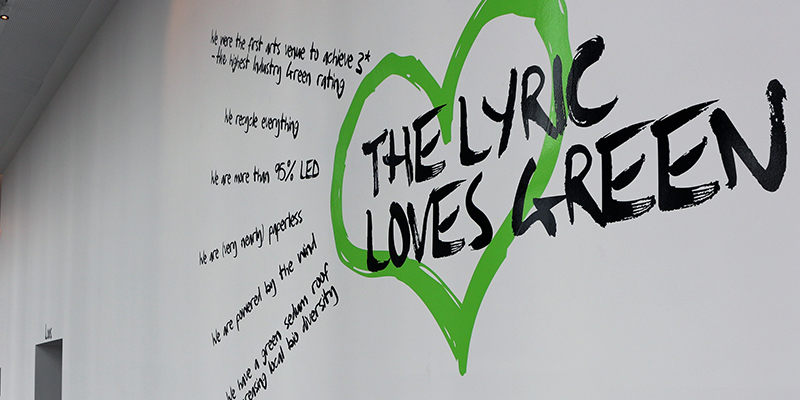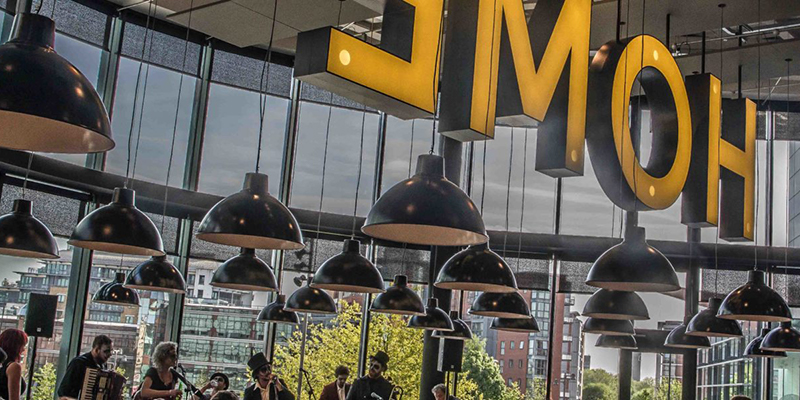3. Take climate action in your organisation
This section aims to inspire organisations to reframe their cultural leadership, rethinking relationships to the spaces, events and communities they embody: day-to-day habits, audience campaigns, artist commissions, governance and advocacy.
Trail-blazing organisations – the eco-systems for creative and artistic work – are demonstrating a new cultural value chain that aligns missions and visions to an environmentally sustainable world. All organisations (no matter their size, location or cultural focus) can demonstrate significant benefits by embedding environmental sustainability into their business practice.

Key principles
1) Create and maintain clear policies, strategies and responsibilities.
What could this look like?
- A strategy led by the Board and senior management, with devolved environmental responsibilities permeating all job levels
- A strategy Integrated into organisational vision, mission and values
- A strategy compliant with legislation and regulations (local, national and international as required)
2) Communicate and engage with your stakeholders on climate action
What could this look like?
- Strong demonstration of ethical leadership and organisational commitment leading to increased staff buy-in
- Integrating environmental sustainability into your procurement decisions, steering supply chains in a more sustainable direction
- Actively engaging with audiences on reducing their environmental impacts
3) Understand and be accountable for your organisation’s environmental impact
What could this look like?
- A set of clearly defined environmental impacts, ambitions and objectives over time
- A set of quantifiable environmental targets which are documented in your environmental policy or action plan
- A strategy for data collection and review, evaluating the learnings and/or outcomes of your interventions
4) Actively work to reduce your organisation’s environmental impact
What could this look like?
- Improved resilience by reducing costs, accessing new funding and investment and adapting to climate change
- An annual allocation of resources to target reductions e.g. money and time
- An opportunity to demonstrate environmental commitment + ability to advocate for sustainability and influence the cultural sector and civic society
Case studies
Lyric Hammersmith

Environmental sustainability is one of Lyric Hammersmith’s core values, with sustainability embedded across the entire organisation, including roles and responsibilities, procurement, programming and engagement with key stakeholders. Lyric Hammersmith have now linked their environmental commitment and ambitions to the wider context of the Paris Agreement and the UK Climate Change Act in their environmental policy. Read to find out how Lyric Hammersmith developed their environmental policy, keeping a focus on planning, evaluation and responsibilities.
HOME Manchester

A purpose-built centre for film, theatre and contemporary visual art, HOME opened their doors on First Street in Manchester city centre in 2015. HOME demonstrates environmental commitment and leadership across the board – from rooftop honeybee hives and sustainable procurement to carbon literacy training and creative programming. HOME not only shows what positive environmental change looks like, they share and inspire others to – their peers, their neighbours, their communities – locally, nationally and beyond.
Resources and further reading
- Webinar: Effective Environmental Policies (Julie’s Bicycle, 2019)
- Webinar: How to Share Your Environmental Story (Julie’s Bicycle, 2019)
- Webinar: Making Data Meaningful (Julie’s Bicycle, 2018)
- Webinar: Greening your Capital Project (Julie’s Bicycle, 2019)
- Guide: Greening the Office (Julie’s Bicycle, 2015)
- Guide: Museums’ Environmental Framework (Julie’s Bicycle, 2017)